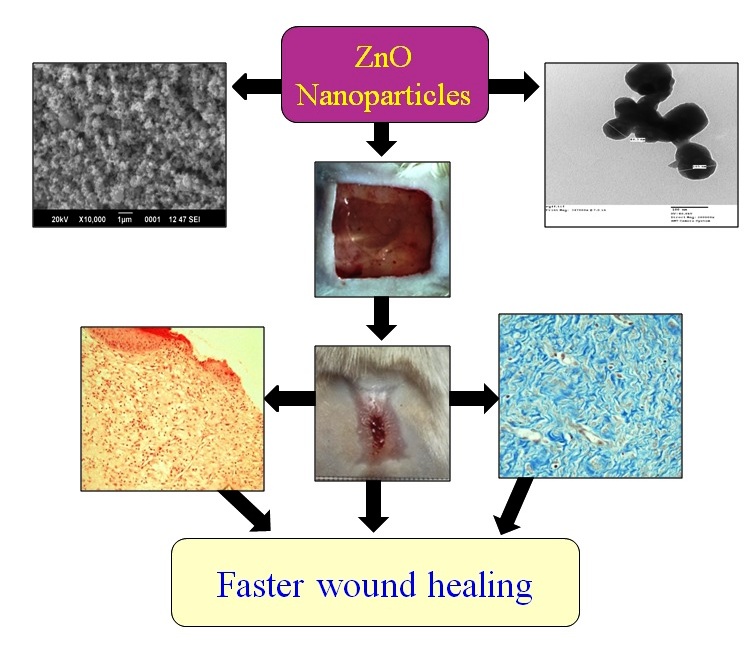NANOSYSTEMS: PHYSICS, CHEMISTRY, MATHEMATICS, 2020, 11 (4), P. 453–461
Comparative evaluation for wound healing potentials of bulk and nano forms of zinc oxide ointment
V. Gupta – Department of Chemistry, University of Jammu, India; vijayta1gupta@gmail.com
P. K. Verma – Division of Pharmacology & Toxicology, SKUAST-Jammu, J&K, India
A. Gupta – Department of Physics, University of Jammu, J&K, India
V. Kant – Division of Pharmacology & Toxicology, IVRI, Bareilly, UP, India; Presently: Department of Vety Pharmacology & Toxicology, LUVAS, Hisar, India
P. Kumar – Department of Pathology, IVRI, Bareilly, UP, India
M. Sharma – Department of Chemistry, University of Jammu, India
Development of nanotechnology has led to massive breakthroughs in the area of wound healing. Recently, metal oxide nanoparticles have shown a broad range of applications in biomedical fields. The lack of potent healing agents for complicated wounds and healing potentials of zinc oxide (ZnO) motivated us to evaluate the wound healing potentials of nano ZnO in comparison to its bulk form in rats. In the present study, single open excision wounds (2×2 cm2) were created on the backs of fifteen rats and divided into Group I, II and III. On the wounds of group I, II and III, topical application of ointment base, bulk ZnO (20 %) and ZnO nanoparticles (2 %) was done for 14 days, respectively. Significantly smaller wound area and increased percent wound contraction was evident in the ZnO nanoparticles-treated group. Histopathological analysis revealed that the ZnO nanoparticle-treated wounds possessed reduced numbers of fibroblasts and blood vessels. However, collagen fibers in ZnO treated group were compactly arranged in thick bundles with a well-organized manner and orientation. The newly formed epithelial layer was also covering more area of healing tissue in the ZnO nanoparticle-treated group. The ZnO nanoparticle-treated group also revealed the higher overall wound maturity score, as compared to other groups. In view of this, it might be concluded that topical application of ZnO nanoparticles (2 %) caused faster wound healing and the healing was better than bulk ZnO treatment, even at ten-fold lower concentration.
Keywords: Zinc oxide, nanoparticles, wound healing, collagen, epithelial layer, rats.
DOI 10.17586/2220-8054-2020-11-4-453-461
